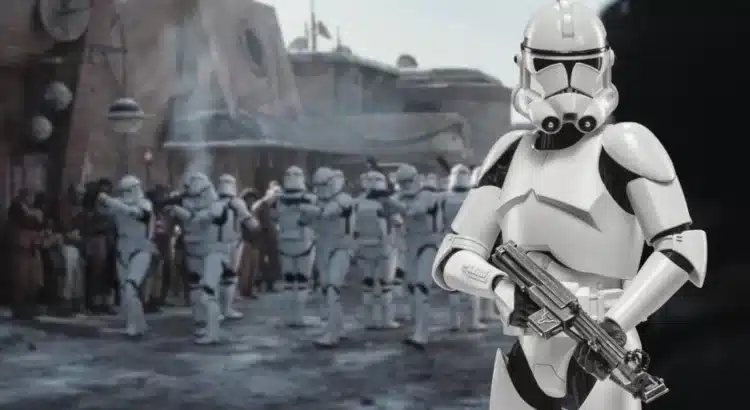The Star Wars universe is filled with countless characters, from Jedi and Sith to droids and bounty hunters. Among these are the clone troopers, the loyal soldiers of the Republic who played a pivotal role in the Clone Wars. But when it comes to the very first clone trooper—Clone Trooper 0001—there’s a certain mystique surrounding this seemingly important figure. Who is Clone Trooper 0001, and why is his designation significant? Let’s dive into the story and speculation behind this mysterious character. The Significance of the Number 0001 When you hear the designation “Clone Trooper 0001,” it’s easy to imagine that this particular clone must be something special. After all, the number 0001 implies that this trooper was the very first clone produced on Kamino, the planet where the entire clone army was engineered. It’s the kind of designation that suggests prestige, importance, and perhaps a place in the annals of…
How stuff works
The Concept of Money in Star Wars Universe Explained

When it comes to money, our routine life and soft science fiction are kinds of antipodes. The first one is based on objective reality, the second is totally built on imagination. Being a crucial aspect of reality, money is often simplified in sci-fi movies, especially in those which tread a fine line between fantasy and adventure fiction. Their plot may revolve around social inequality, power, money-related crimes, or relationships between rich and poor, but never revolves around money itself. Thus, it may be hard to grasp the role of money in a fantasy movie. Star Wars belongs more to a space opera genre rather than to sci-fi, being focused on moral, political and spiritual issues instead of revealing an economical side of the universe. But today we are going to uncover the concepts of currency, trading system, and making money in the Galaxy. Currencies in the Galaxy First of…
Star Destroyers Compared – Star Wars Explained
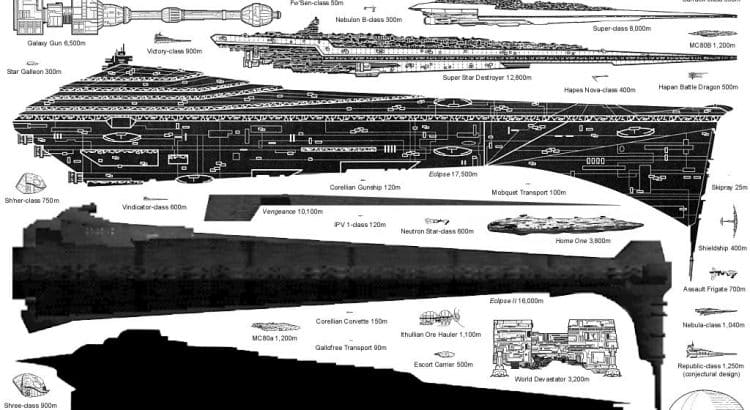
Have you always wanted to learn more about the ships in Star Wars? Growing up a girl who wanted to be a pilot, this was one of my favorite parts of Star Wars. I won’t lie, I watched a young Anakin and daydreamed about pod-racing and I was also fascinated with all the ships in the Star Wars Universe. In this great video, you can learn more about all of the Star Wars destroyers found in the game. The video is only a little over 3 minutes long but it’s packed full of great info. Learn more about each destroyer, their class and size, the weapons they are loaded with, how many crew members they can carry, and much more. You’ll feel like a Star Wars destroyer pro in no time. If you’re just one of those fans who loves Star Wars stats, this is also a video that will…
All TIE Fighter Types and Variants (Legends) – Star Wars Explained

Here we have a great Star Wars Explained video that goes into the different types of TIE starfighters that are used by the Galactic Empire. It’s 10 minutes of awesomeness, especially if you love these fighters. Most people are familiar with the Tie fighters shown in the Star Wars movies, but how much more do you know about them? This video will give you more info than you probably ever had before about Star Wars TIE Fighter types. Do you have a favorite? Check out this Star Wars The Black Series First Order Special Forces TIE Fighter (6″ Scale) and this Star Wars Return of the Jedi The Vintage Collection Tie Interceptor Vehicle [Amazon Exclusive] Learn about every type of TIE starfighter used by the Galactic Empire in the Legends Star Wars universe! The TIE Fighter playlist: https://www.youtube.com/playlist?list… Learn more about the TIE Fighter: https://www.youtube.com/watch?v=UFddC… Learn more about the TIE Phantom: https://www.youtube.com/watch?v=x14yt… Learn…
Why Are Lightsabers Blue? And Other Questions Answered
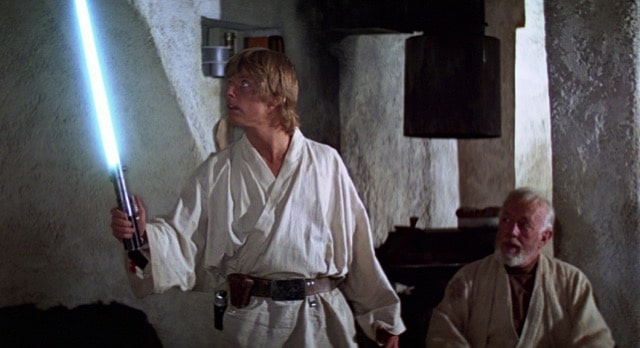
Lightsabers are one of the most iconic items in all of the Star Wars universe, and lightsaber duels are some of the most memorable moments in movie history. But how much do you really know about lightsabers? I spent some time researching to see what interesting facts I could find, and to answer some questions that you might have. If you have more, leave them in the comments! Why Are Lightsabers Blue? Lightsabers can be many colors, but blue, green, and red are the most common in the movie franchise. A lightsaber’s color is determined by the type of crystal that’s used to power it. Kyber crystals, which grow in crystal caves on the Outer Rim, were traditionally used to build lightsabers, but because of their scarcity, other types of gems have come into use. For example, the Sith use synthetic crystals that become superpowered when infused with the Dark side…
Could the Planets in Star Wars Actually Support Life?

We know the Star Wars franchise is big on imagination. This wonder and mystery is one thing that made it so appealing to fans. Amazing creatures, large vast planets and creative characters are some of the key elements that made Star Wars so great. That said, there have always been those who would question the logic behind the Star Wars story. One thing that makes the planets of Star Wars stand out is the unique environment that each one had. Whether it was vast barren stretches of sand or a planet covered in ice, there was always some unique feature that stood out in each planet. This begs the question: Could any living thing actually survive there? Wired.com has a very interesting piece where they cover some of the popular planets of Star Wars and consider whether or not they would actually be able to support life. Here is an…
Say Hello To Sabacc – the Star Wars Card Game
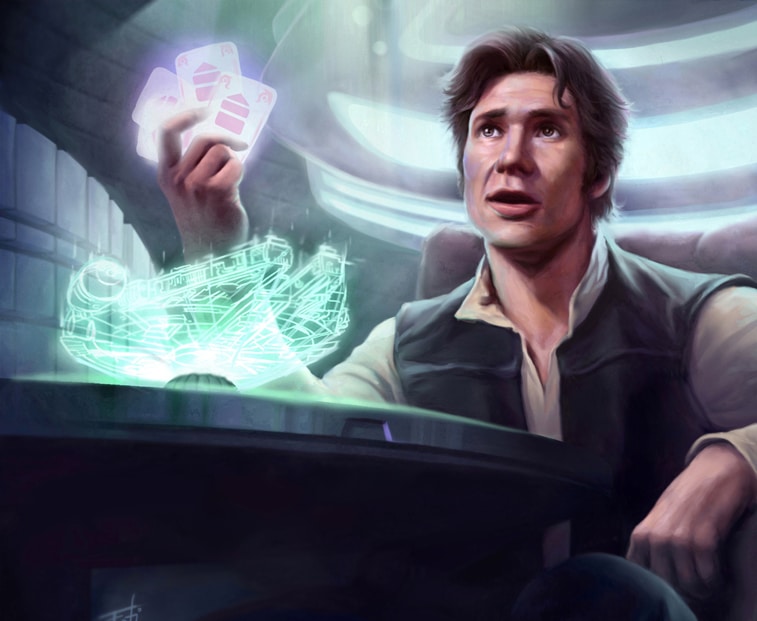
As every other iconic gambling game, so too Sabacc has crossed time and dimensions and reached our galaxy, and our interconnected network of computers. If you don’t know what Sabacc is, let’s take this journey together and discover. The first mention of Sabacc ever recorded on paper was in the second draft of The Empire Strikes Back script. In it, Han Solo recalls that his friend Lando Calrissian won Cloud City in a Sabacc game. Now that sounds like a high-roller game – winning a whole city in a card game is not too shabby. From that modest beginning Sabacc spread through the various worlds of the Old Republic. In its original form Sabacc is quite a complex game, a combination of blackjack, poker and a freewheeling slot machine. How can blackjack, poker and slot game come together in a single game? Check this out: The cards used in Sabacc aren’t made of paper, but rather are…
How Stuff Works: Comlink
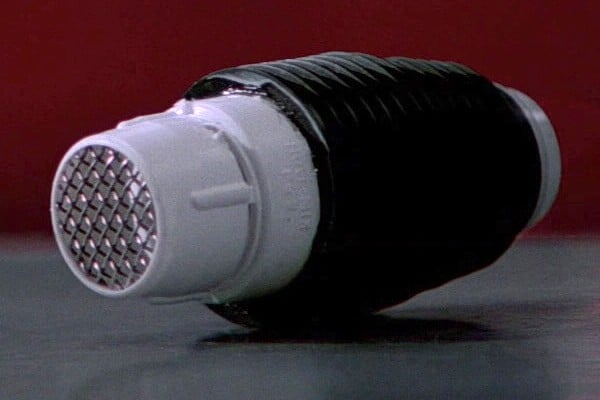
A comlink is a small, hand-held personal communications transceiver. It consists of a receiver, a transmitter, and a small power source. Comlinks vary in size and configuration from hand-held cylindrical models to flat wrist-mounted units, to units incorporated into armored helmets. The comlink used by Jedi Master Qui-Gon Jinn has a port built into its base for transmitting data gathered by other devices, such as a sampler used to examine midi-chlorian levels. A typical comlink has a range of 50 kilometers, though this range can be extended by tapping into expanded satellite communication networks. Some comlinks come equipped with encryption routines to prevent the interception of sensitive transmissions. In urban areas dense with electromagnetic activity, comlink range is greatly affected and usually supplemented by networks that help distribute the transmission to the intended recipient. Military and vehicle-mounted comlinks have greater range due to greater power sources. Starships come equipped with…
How Stuff Works: Battle meditation
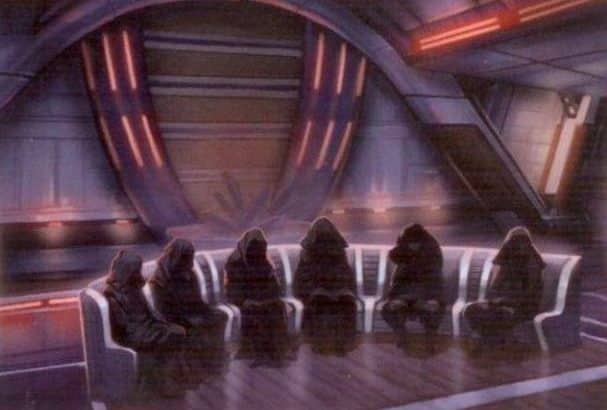
Battle meditation was a manifestation of the Force which instilled in the meditator’s allies a greater morale in battle and reduced the enemy’s will to fight. Using the Force, one could coordinate entire fleets of ships, allowing them to perform at maximum efficiency, acting as one to counter every enemy move quickly and effectively. A refinement of battle meditation was known as Force Meld. This Force-power was first made famous by the ancient Jedi Odan-Urr, Arca Jeth and Nomi Sunrider. It was also practiced by Bastila Shan, as well as later Jedi Council members Yarael Poof and Oppo Rancisis, who used it in both the Stark Hyperspace War and the Clone Wars. Bastila Shan supporting the Republic Navy in 3,956 BBY in the Battle of Rakata Prime. (Note: visible Force powers are only a gameplay element.) Battle Meditation was not merely province of the light side; Emperor Palpatine and Grand…
How Stuff Works: Ryyk Blade
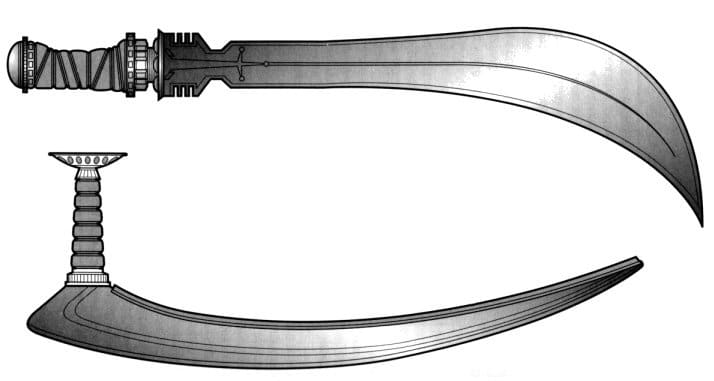
A weapon that finds its origin on Kashyyyk, the ryyk blade is the traditional melee weapon carried by a Wookiee. Ryyk blades can vary in design based on their specific origin, but generally consist of sharpened blades with hide-wrapped grips. A Wookiee’s ryyk blade is considered, much like a bowcaster, a prized possession and weapon. It is often brandished with Wookiee writing, sometimes depicting great adventures that happened with the ryyk blades. A Wookiee who is able to successfully carry out a hunt with only a ryyk blade is held with high respect among his peers and clan members. The average ryyk blade weighs about thirty-three pounds, although this is nothing to a Wookiee, who is able to wield the weapon with blinding speed and agility. Traditional Wookiee combat styles emphasize brute force over finesse, although Wookiees use the weapons with great precision, wasting no energy or motion, making them…
How Stuff Works: Protocol droids
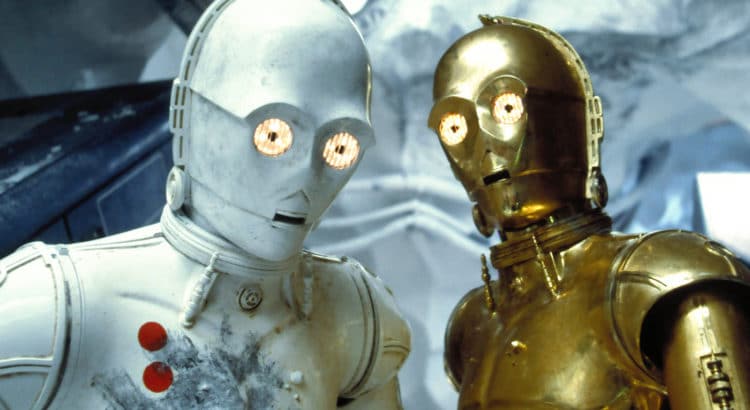
A protocol droid was a type of droid designed to assist sentients in their relations with one another, often as translators between sentients or between sentients and computers. They also possessed knowledge about various cultures and customs, in order to advise those for whom they are working, and also so that they themselves may behave in a diplomatic and culturally sensitive manner. Protocol droids constructed around 4,000 BBY (around the time of the Great Sith War and the Jedi Civil War) were frequently engineered with certain situational and behavioral shifts set to occur whenever another design-generation was reached. A number of these droids underwent radical changes with each new generation—for example, when a C7-model droid supplanted the C6 variety. Each numeric “jump” in sequence could have had wide-ranging changes in functionality and temperament during that historical period. Cybot Galactica, the most famous and successful manufacturer of protocol droids, outfited…
How Stuff Works: Gaderffii
The Gaderffii, or Gaffi stick, was the traditional melee weapon of the Tusken Raiders of Tatooine. Crafted out of whatever salvage was at hand, they were very effective in close combat. Nearly every Tusken was proficient in the use of these weapons and more Tuskens chose the gaffi over the Tusken Cycler. The weapon was of the staff-variety, on average about four feet long, with a weapon-head on each end. The first resembled an archaic flanged mace, with each of the four or more flanges sharpened like an axe-edge. Upon the tip was a spearpoint. The opposite end of the gaffi stick usually was bent into an L-shape, with a large and heavy club head tipped by a hook or second spearpoint (which itself was often tipped with sandbat venom) which would inflict maximum pain to an enemy. The dual weapon-heads gave a gaderffii-wielder a wide and versatile amount of…
How Stuff Works: Sith fighter
The Sith fighter was a tentatively named starfighter of ambiguous origin that formed the bulk of Darth Revan and Darth Malak’s space forces during the Jedi Civil War. Little has been gleaned about these fighters specifications. They appeared to carry a prototype twin ion drive system, seen only in this design. Its design appears to be a hybrid of various technologies, matching no specific world. Its specifications gave the fighter maneuverability to the point of instability, meaning much of the central chassis was given to managing the reactor core for optimal performance. When docked, not in use, or traveling through hyperspace, the Sith fighter had the ability to fold its wings and power down its weapon systems. In combat, these were unfolded, and the laser cannons brought to bear, a concept later seen in the S-foils. This allowed it a broad attack arc, while its small profile made it difficult…
How Stuff Works: Blasters
Much of the following technical info is taken directly from Del Rey publisher’s “Essential Guide” series, and I highly recommend them to any fan looking for more. BlastersA blaster was a ranged weapon that fired bursts of particle beam energy called blaster bolts from a replaceable power cell. The most commonly used weapon in the galaxy, blasters’ intense beams consisting of compacted high-energy particles and intense light could kill or paralyze their target, depending on their setting. Blasters ranged from compact pistols, all the way up to large, heavy rifles and starship-mounted blaster cannons. The oldest known type of blaster was used by an ancient droid of an unknown model employed by the Rakatan Infinite Empire. This weapon was considered to be extremely up-to-date compared to the blasters of the year 3,956 BBY. Technical informationThe term blaster was often used interchangeably with the term laser in everyday conversation, both denoting…
How Stuff Works: Valley of the Dark Lords
The Valley of the Dark Lords, also known as Valley of the Sith Lords was a valley and burial ground of Korriban’s Sith Lords. The Sith Great Temple was located in the valley. A number of different layouts and appearances have been given to the valley in various publications. This is, in the case of video games, mostly due to memory restraints and practicality. For instance, its appearance in Knights of the Old Republic lends itself to being easily traversed and places less demand on hardware than a full scale valley. In Darth Bane: Path of Destruction it was found that the road from the Academy to the Tombs was actually quite long and the area that the actual Valley was barren and harsh, hard to travel through for even the Sith Lords. In Jedi Academy, on the other hand, the valley is designed similar to the appearance of the…
How Stuff Works: Vibroblade
Vibroblades are the galaxy’s main cutting weapon of choice. Though they come in many different shapes and sizes, ranging from knives to longer swords, vibroblades are all equipped with a compact ultrasonic generator in the hilt. This causes the blade to vibrate at enormous speeds, thus giving the weapon its name. Because of this ultrasonic vibration, even the slightest glancing blow become a gaping wound. It could be fitted with cortosis weave, allowing it to parry the blows of lightsabers and energy swords. As it is quieter than a blaster, the vibroblade is popular among assassins, but it can also be easily carried as a secondary weapon for close-range fighting. In the past these weapons were often minted containing a weave of the rare material cortosis, which allowed blade to parry even lightsaber strikes, a property that made the vibroblade a weapon of choice among Sith assassins. However, this practice…
How stuff works: Speeder bikes
Speeder bikes and swoop bikes are small, fast transports that use repulsorlift engines, usually carrying one or two passengers. Speeder bikes emphasized speed and maneuverability over conventional speeders and were popular with thrill-seeking teenagers and military scouts. A typical speeder bike had a maximum altitude of 10 meters (32 feet) and could thus maneuver deftly over very rough terrain. Some companies manufactured extras like sidecars for speeder bikes. The lightweight bikes can usually attain speeds in excess of 500 kilometers per hour. A quartet of small directional steering vanes on twin outriggings afford the speeder its maneuverability. The Imperial biker scouts from Return of the Jedi used two shoulder-level handgrips to control elevation and direction; a pair of rocker-pivoted pedals controls acceleration. Located just fore of the speeder’s saddle is a panel of toggle switches and knobs that control communications and other vital systems. Slung beneath the speeder’s frame is a…
How Stuff Works: Bacta Tanks
A miracle of modern medical technology, the bacta tank is a mainstay in both Imperial and Republic medical wards. The containment cylinder fills with rejuvenating bacta fluid that is capable of healing even the most grievous wounds. The translucent red fluid nurtures the growth of a bacterial medium that seeks out traumatized tissue and promotes regeneration and growth to rapidly heal wounds with minimal or no scarring. Medical droids closely monitor the patient, who is suspended in the fluid. Bacta could be administered through disposable bacta patches, injection, or by submersion in a bacta tank. Bacta was also used in portable lotion form. The method of administration depended on the severity of the wounds. Bacta must be applied in a solution of clear synthetic fluid which mimics the body’s own vital fluids. Bacta had a smell that was described as ‘sickly-sweet’; immersion in a bacta tank could leave one with the…
How Stuff Works: The Star Forge
The Star Forge was a dark side artifact that was created by the Infinite Empire of the Rakata in 30,000 BBY, five thousand years before the rise of the Galactic Republic. A giant automated shipyard, the Star Forge drew energy, heat, and matter from a nearby star which, when combined with the power of the dark side, was capable of creating an endless supply of ships, droids, and other war material. It was constructed through the use of slaves from many subject worlds including, but not necessarily limited to, Corellia, Coruscant, Dantooine, Drall, Duro, Kashyyyk, Korriban, Manaan, Selonia, Sleheyron, Tatooine, and Ziost. It fed on the Force, drawing particularly from the cruel Rakata, corrupting it into an artifact of the dark side, and often times its user as well, which is why Darth Revan limited his contact with the Star Forge, lest it control him as it did the Rakata….
How Stuff Works: The Star Wars galaxy
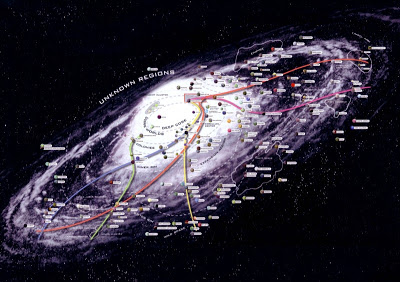
Among fans, the Galaxy is referred to as the Star Wars Galaxy or the Galaxy far, far away, or the GFFA for short. The Galaxy was said to contain a “type 3” civilization (in the Kardashev scale — whereas Earth is home to a “type 0.7” civilization). This scale takes into account the level of integration and civilization between peoples (albeit this integration also involves different species, rather than just racial variations of only one sentient species, as it is on a sole planet), which in essence form one single “galactic civilization”, given the political unification (despite the few separatisms) and the integration of the worlds in spite of the considerable distances (with effective means of transportation).Nothing connects the Galaxy with ours (Milky Way). However if we are to consider the crossover between Star Wars and E.T., we can infer the following: the Brodo Asogi leader, Senator Grebleips sent an expedition…
How Stuff Works: Lightsabers
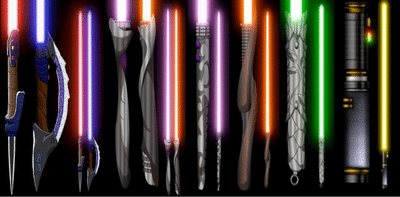
The lightsaber (less formally, the laser sword) was more than just the distinctive weapon of the Jedi, it was a segment of the order’s history and its ultimate symbol for millennia. There could be no Jedi without a lightsaber and no lightsaber without a Jedi in the eyes of galactic denizens. Over the years, it came to be associated with gallantry and elegance otherwise lost in an age of blasters. Jedi traditionally constructed their own lightsaber as part of their training. To carry a lightsaber was an example of incredible skill and confidence, dexterity and attuning to the Force. Since its plasma blade was essentially weightless, the weapon produced a gyroscopic effect, and so it was very difficult to handle safely. Yet this made the weapon ideal for force-sensitive users who’s ability to predict the various energy pulsations through the force allowed him or her to compensate for them. They…
How Stuff Works: Mass Shadow Generator
The Mass Shadow Generator was a superweapon used in the Battle of Malachor V. It was created by the Zabrak tech specialist Bao-Dur, under orders from the Jedi Knight Revan, in the year 3,960 BBY. The weapon was the centerpiece of a trap with which Revan hoped to bring about a conclusive end to the Mandalorian Wars. Overseeing the device’s use was a Jedi General (later known as the Jedi Exile). Revan lured the Mandalorians to Malachor and a massive fleet battle ensued in orbit. During the fighting, his loyal general commanded Bao-Dur to activate the secret weapon with a single, silent nod. Moments later, a significant portion of both fleets were suddenly drawn from orbit into a vast gravity vortex that was powerful enough to crush the countless ships into the planet’s crust and fracture Malachor V to its very core. In 3,951 BBY, the The Mass Shadow Generator was activated…
How Stuff Works: Holocrons
A holocron was a crystal lattice (often cubical and sized to be held in one hand) in which the Jedi, as well as the Sith, of old stored phenomenal quantities of data, as well as the holocron’s gatekeeper. The Sith also had their own form of holocron technology, and they seem to predate the Jedi in using the technology by three thousand years. Description Sith holocrons usually took the form of a pyramid, and the existence of the first Sith holocron predates that of a Jedi holocron by at least three thousand years. The technology to create the pyramidal holocrons common to the Sith was something gifted to the ancient Sith king Adas by Rakata warriors trying to gain his trust. He accepted their technology and made a holocron, but he saw through their ploy and rebelled against them. It can only be assumed that the Jedi also learned the…
How stuff works: Podracing
Podracing was a popular sport in the less developed regions of the galaxy. It has been called “the ultimate test of skill and daring on Tatooine,” and was certainly one of the most dangerous sports ever invented, killing many racers. Podracers were small, one-man repulsorcraft, composed of an anti-gravity pod propelled by one or more pairs of large turbine engines. The engines were not physically connected to each other, being linked instead by power couplings consisting of plasma discharges. The engines were connected to the pods themselves by means of long, Steelton cables. Characterisitics Besides housing the racer’s pilot, each pod contained a repulsorlift engine that kept the craft at a specific, low-level altitude. The turbine engines were incredibly powerful, and were connected by an energy binder that kept them from flying apart. Podracing was popularized in the Outer Rim Territories during the last decades of the Galactic Republic. Its…


